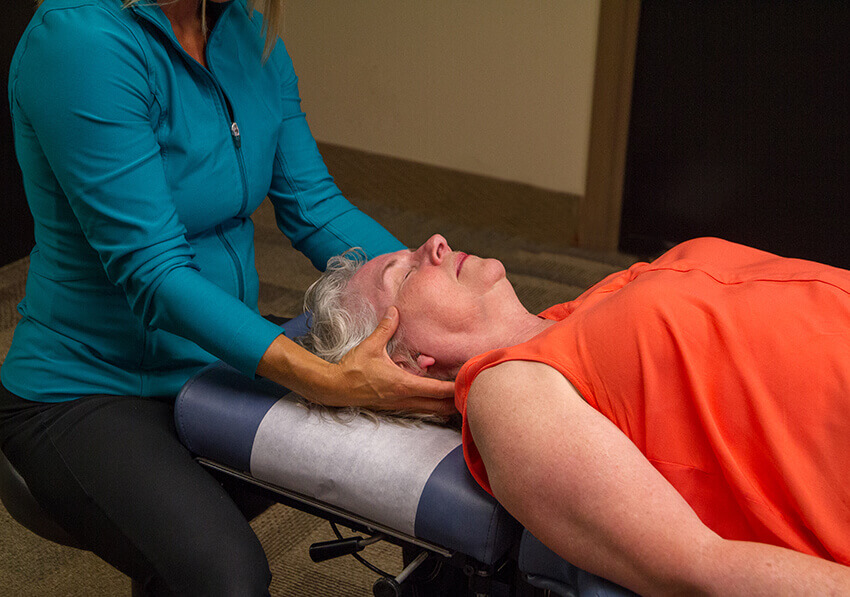There are four different kinds of common, benign headaches. However, these are not the only kinds of headaches—if you have a headache that comes on suddenly, that you would describe as the worst headache of your life, and it progressively gets worse at a rapid rate, these are the symptoms of a pathological headache. If experiencing these symptoms, you should seek immediate emergency medical care.
The more common and benign types of headaches described below respond well to conservative chiropractic treatment.
Schedule an Appointment
Sinus Headaches
Sinus headaches commonly follow a sinus cold/flu or a seasonal allergy attack. Contrary to popular belief, sinus headaches are rarely from an active sinus infection. Most of the time, the infection is over and the fluid left from the reaction to the infection is stuck in the sinuses. When this fluid has nowhere to go, the pressure inside the sinuses builds up and causes a headache. Sinus headaches rarely require antibiotics because the infection is already over and most sinus infections are viral, not bacterial (antibiotics have no effect on viruses). Sinus headaches present as a pressure pain behind the brow bone, and/or under the eyes, or below the cheekbones. The most common symptom of sinus headaches is that they get worse when the patient bends down because the fluid moves to the front of the head.
There are a number of different manual chiropractic techniques that can be used to open up the clogged sinuses and allow them to drain. Once the fluid is drained out, the pain goes away.
Cluster Headaches
These headaches are typically characterized by very severe pain within or around one eye that may spread to the temple or adjacent areas of the head and face. Cluster headaches may or may not have other symptoms besides pain, including red eyes, tearing, droopy eyelids, nasal congestion, nasal discharge, facial sweating, and/or eyelid swelling. Cluster headaches get their name because each episode is short, from 15 minutes to 2 hours, and they occur once or more per day over a period of weeks or months in clusters.
Cluster headaches respond very well to chiropractic adjustments.
Tension Headaches
Tension headaches are the most common type of headache and are typically mild to moderate in intensity. Aching, pressure, and tightness on both sides of the head characterize these headaches. However, there is no throbbing, nausea, or sensitivity to light or sound. Tension headaches are usually not bothered by, and may even be relieved by physical activity.
Tension headaches are the most common type of headache, and they respond very well to chiropractic therapy.
Migraine Headache
There are two types of migraine headaches, classic and common. Classic migraines are preceded by what is called a visual prodrome. Prodromes precede the headache by about 20-30 minutes and appear as scintillating lights in a herringbone pattern on one side of the visual field. The headache that follows is a moderate to severe throbbing, pulse-like pain. Migraines are typically aggravated by physical activity, light, sound, and the pain can be accompanied by nausea.
Common migraines are the same as classic migraines without the visual prodrome. Both types of migraines respond well to chiropractic treatment including adjusting, nutritional modifications, ice, and heat.
Disclaimer: Please keep in mind that this information is only for general knowledge; it is not to be used for self-diagnosis or self-treatment.
I have been seeing Dr. Karis for several years and I couldn’t be more thankful for her care and treatment! Through chiropractic care, Dr. Karis has helped get my migraines under control. Chiropractic care has helped with my flexibility as well as making sure my whole body is aligned so I am not overcompensating in one area and causing more pain. Just recently, chiropractic care has helped me through my pregnancy. By seeing Dr. Karis on a consistent basis, she was able to alleviate extreme back pain and prepare my body for a smooth, natural birth!Sarah K.
